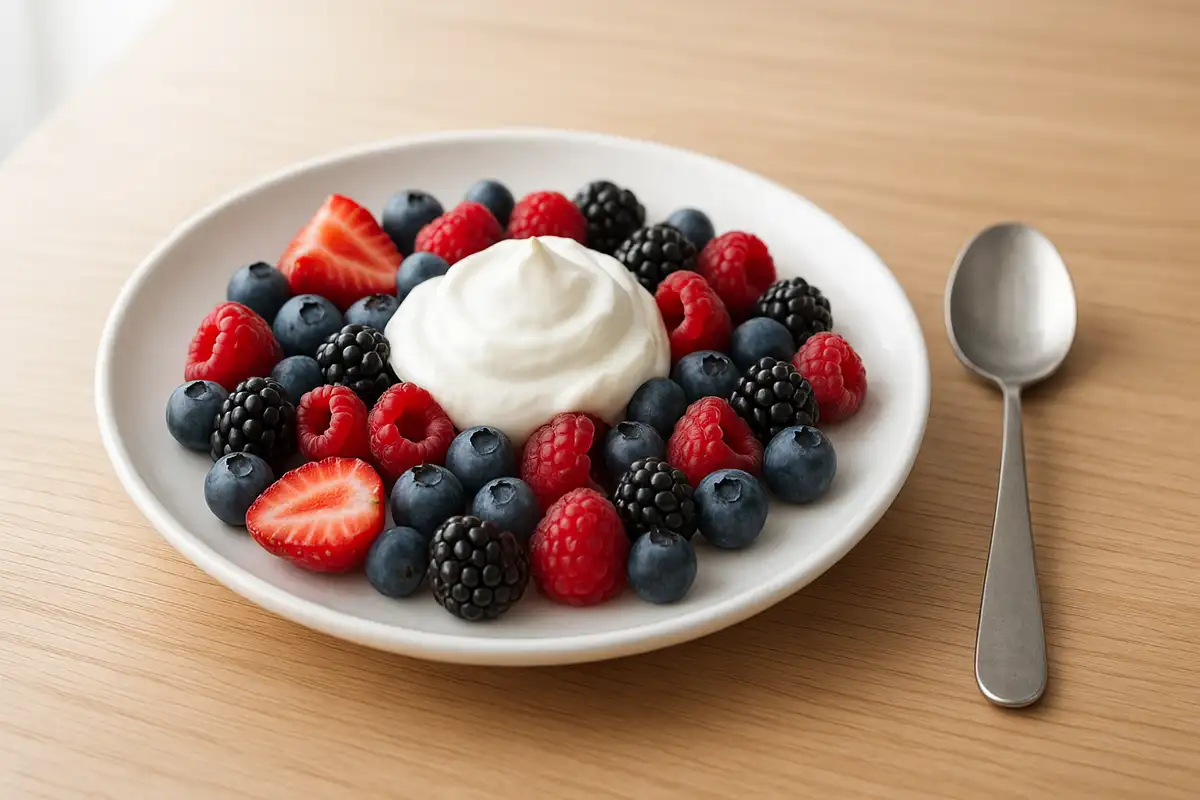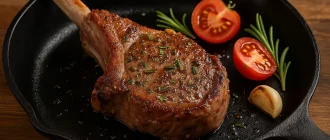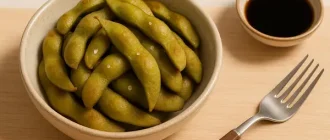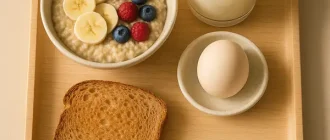Let’s be honest—losing weight often sounds like code for cutting out everything fun. But here’s a twist: what if something sweet, juicy, and naturally satisfying could actually help you slim down? Fruit isn’t just a snack; it’s a strategic tool if you know how to use it. Sure, not every fruit will fast-track your weight loss, but the right ones can help curb cravings, improve digestion, and keep your energy steady. So, what is the best fruit to eat to lose weight?
Top 10 Low-Calorie Fruits for Weight Loss (Per 100g)
This horizontal bar chart presents the top 10 low-calorie fruits based on their caloric value per 100 grams (3.5 oz). Watermelon, strawberries, and cantaloupe are among the best options for weight loss due to their low energy density and high water content.
Why Fruit Matters in Weight Loss
Fruits are nature’s candy, but unlike processed sweets, they come packed with fiber, water, vitamins, and antioxidants. Imagine eating a snack that hydrates you like a glass of water, satisfies you like a protein bar, and delivers the antioxidants of a supplement—all in one bite. That’s the fruit advantage. Their naturally low energy density means you can eat more, feel fuller, and still consume fewer calories. It’s like choosing to fill your gas tank with high-efficiency fuel rather than something that burns out fast and leaves you needing more.
Weight Loss Over 12 Weeks with Different Fruit-Focused Diets
This chart compares average weight loss over 12 weeks from clinical trials involving various fruit-focused diets. Berries-rich diets led to the greatest reduction, while diets including bananas showed more modest results.
Still, fruit isn’t a magic bullet—it’s one of many effective tools in a smart weight loss strategy. To understand where fruit fits in, here’s a comparison with other commonly recommended weight-loss-friendly foods:
Weight-Loss Food Comparison Table
| Food Type | Average Calories (per 100g) | Fiber (g) | Satiety Level* | Nutrient Density | Notes |
|---|---|---|---|---|---|
| Fresh Berries | 40–60 | 3–8 | High | Very High | Rich in antioxidants (USDA) |
| Boiled Eggs | 155 | 0 | High | High | Great protein source (Harvard) |
| Raw Almonds | 579 | 12 | Medium-High | High | High in healthy fats, calorie-dense |
| Greek Yogurt (plain) | 59 | 0 | High | High | Excellent with fruit |
| Oatmeal (cooked) | 71 | 2.5 | High | Medium-High | Slow-digesting carbs |
| Watermelon | 30 | 0.4 | Medium | Medium | Hydrating but low in fiber |
*Satiety level is based on observational and clinical data and rated relative to energy density.
As this table shows, fruits—especially berries—hold their own against more protein- or fat-heavy foods. They’re not always the most filling per gram, but they offer volume, micronutrients, and flavor with minimal caloric cost. That makes them a smart choice to complement, not replace, other satiating foods in a balanced diet (CDC).
The Winner: Berries
Why Berries?
Berries—like strawberries, blueberries, raspberries, and blackberries—top the weight-loss fruit list. They’re low in sugar and calories but high in fiber and antioxidants. One cup (about 150 grams) of strawberries has only 49 calories, 3 grams of fiber, and a boatload of vitamin C (USDA FoodData Central).
Real-Life Case
Melissa, a 41-year-old marketing specialist from Austin, TX, used to end her day with a bowl of ice cream—until her nutritionist challenged her to try something new. Skeptical but curious, she started replacing her nightly dessert with a cup of fresh berries topped with a dollop of Greek yogurt and a sprinkle of chia seeds. At first, she missed the creamy sweetness of her usual treat, but within two weeks, she noticed a drop in sugar cravings and more energy in the mornings. Three months later, Melissa had lost 14 lbs (6.35 kg) and felt more in control of her eating habits. “It didn’t feel like dieting. It just felt like a smarter, fresher way to treat myself,” she said.
Nutritional Breakdown (per 1 cup):
| Berry Type | Calories | Fiber (g) | Sugar (g) | Vitamin C (%DV) |
|---|---|---|---|---|
| Strawberries | 49 | 3 | 7 | 149% |
| Raspberries | 64 | 8 | 5 | 54% |
| Blueberries | 84 | 3.6 | 15 | 24% |
| Blackberries | 62 | 7.6 | 7 | 50% |
Close Contenders: Apples and Pears
Both apples and pears have high water content and lots of fiber—mostly in the skin—making them highly satiating. A medium apple (about 182 grams) contains about 95 calories and 4 grams of fiber (Harvard T.H. Chan School of Public Health).
Hot tip: Slice them and add cinnamon. No need for sugar—it’s a sweet win!
Grapefruit: The Fat-Fighting Citrus
Multiple studies, including a 12-week trial published in Metabolism, found that consuming half a grapefruit before meals may promote fat loss (Metabolism Journal). One half of a grapefruit has only 37 calories and 1.4 grams of fiber.
Note: Grapefruit can interact with medications like statins. Always consult your doctor before jumping in (FDA).
Watermelon: Light and Hydrating
Watermelon is over 90% water and only about 30 calories per 100 grams (3.5 oz). It’s ideal for those looking for volume without calorie overload (National Watermelon Promotion Board).
But here’s the kicker: It has a higher glycemic index, so moderation is key.
Avocado: The Oddball Fruit That Works
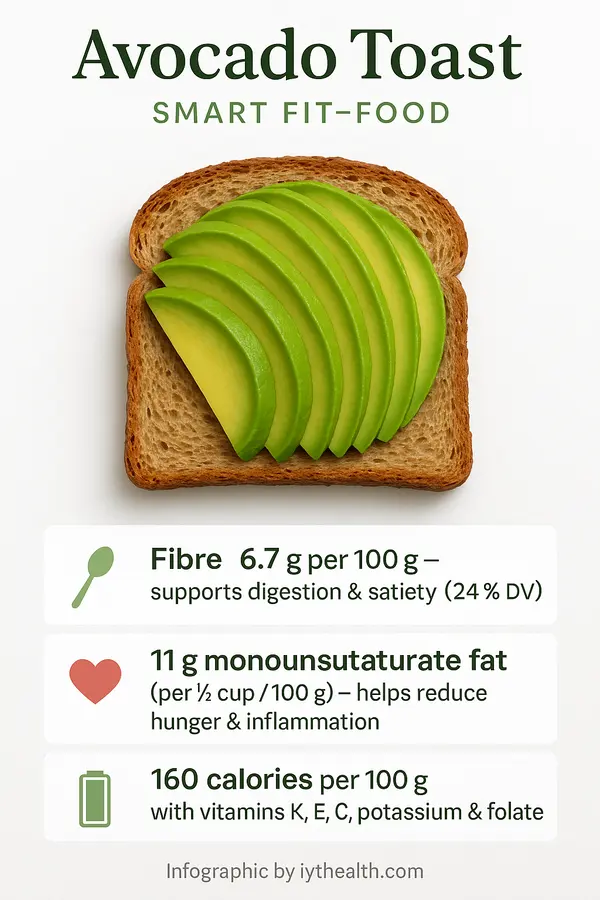
Yes, avocado is a fruit—a fatty one. But those are good fats (monounsaturated), which can help control appetite. Half an avocado contains around 120 calories and 10 grams of healthy fats (American Heart Association).
Pro tip: Mash it on whole-grain toast or blend it into a smoothie.
Smart Fruit Habits for Weight Loss
Choose Whole Over Juice
Whole fruits contain all the natural fiber that slows down sugar absorption, making you feel fuller for longer. Fruit juice, on the other hand, is essentially sugar water with a splash of vitamins. For example, one medium orange (about 131 grams) has 3 grams of fiber and 62 calories, while 1 cup of orange juice has about 110 calories and zero fiber.
Best for: People who struggle with portion control or tend to snack often.
How soon you’ll see benefits: Many notice reduced cravings and better blood sugar control within a week.
Difficulty level: Easy. Just eat the fruit, don’t drink it.
Watch Portion Sizes
Yes, fruit is healthy, but even natural sugars can add up. Overeating bananas or grapes can unknowingly stall weight loss. A simple trick is to measure out your fruit portions using your palm or a measuring cup until you get the hang of it.
Best for: Anyone on a calorie-conscious plan.
How soon you’ll see benefits: Expect noticeable changes in 10–14 days if portioning is consistent.
Difficulty level: Moderate. Requires a bit of mindfulness and prep, but gets easier with habit.
Pair with Protein
Pairing fruit with protein—like Greek yogurt, nut butter, or boiled eggs—helps balance blood sugar and increases satiety. For example, an apple with a tablespoon of almond butter keeps you full far longer than either on its own.
Best for: People with afternoon or late-night cravings.
How soon you’ll see benefits: Immediate. You’ll feel more satisfied after snacks and meals.
Difficulty level: Easy to moderate. Needs minimal planning and shopping.
Time It Right
Eating fruit earlier in the day, especially around breakfast or pre-workout, gives your body time to use the natural sugars as energy. Having a banana before a workout or berries with breakfast may boost performance and metabolism.
Best for: Active individuals or those starting their fitness journey.
How soon you’ll see benefits: Within 1 week—more consistent energy and improved workout recovery.
Difficulty level: Easy. It’s just a matter of tweaking your timing.
Mix It Up
Each fruit has its own unique nutrient profile, so variety helps prevent nutrient gaps. Rotate between citrus, berries, apples, and stone fruits. Not only does this keep your taste buds happy, but it also helps reduce the risk of overexposure to a single type of sugar or compound.
Best for: Anyone bored with their weight-loss routine.
How soon you’ll see benefits: Over 2–4 weeks with more balanced nutrition and less burnout.
Difficulty level: Easy if you shop seasonally or batch-plan your grocery list.
Diagnostic Tip: Body Composition Scan
If you’re serious about tracking fat loss (not just scale weight), consider a DEXA scan (Dual-energy X-ray Absorptiometry). Accuracy rating: 9.5/10. Average cost: $100-$150 per scan in the U.S. (NIH).
Editorial Advice
Reyus Mammadli, medical consultant, recommends prioritizing berries for their fiber-to-sugar ratio and antioxidant load. “They give you the sweet satisfaction without the calorie crash.”
Change in Waist Circumference Over 8 Weeks with Daily Fruit Inclusion
| Fruit | Waist Reduction (cm/in) |
|---|---|
| Berries | −3.2 cm / −1.26 in |
| Grapefruit | −2.7 cm / −1.06 in |
| Apple | −2.4 cm / −0.94 in |
| Melon | −1.5 cm / −0.59 in |
| Banana | −1.1 cm / −0.43 in |
This chart visualizes the average reduction in waist circumference over 8 weeks with daily inclusion of different fruits. Berries showed the greatest effect, supporting their role in weight management strategies.
Our team also suggests rotating your fruit choices to benefit from diverse nutrients and flavors. Don’t just chase the lowest calorie option—think balance, sustainability, and satiety.
Final thought: Fruit isn’t the enemy—it’s your flavorful, fiber-filled friend in the weight loss journey. Just keep it whole, simple, and smart.
About the Author
Reyus Mammadli is the author of this health blog since 2008. With a background in medical and biotechnical devices, he has over 15 years of experience working with medical literature and expert guidelines from WHO, CDC, Mayo Clinic, and others. His goal is to present clear, accurate health information for everyday readers — not as a substitute for medical advice.

